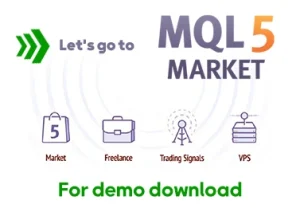Guarding Your Capital:
Stop Losses and Risk Management in Forex
The allure of forex trading lies in its potential for high returns. But that potential comes hand-in-hand with significant risk. The key to navigating the forex market successfully is through disciplined risk management, and a crucial tool in that toolbox is the stop-loss order. Before diving into stop-loss specifics, let’s establish the foundation: capital management.
The Bedrock: Capital Management
Forex is a two-way market – currencies can go up or down in value. This inherent volatility means accepting that not every trade will be a winner. Capital management ensures you can weather the inevitable losing trades and live to trade another day.
But before we delve into stop-loss specifics, let’s establish the foundation:
capital management.
Capital Management: The Bedrock of Forex Trading
Imagine building a house. You wouldn’t start stacking bricks without a solid foundation, would you? Similarly, forex success hinges on a sound capital management plan. This plan dictates how much capital you allocate per trade, ensuring you don’t risk blowing up your entire account with a single bad move.
Here are some key principles of capital management in two-way markets like forex:
- Percentage-Based Risk: A common approach is to risk a fixed percentage (e.g., 1-2%) of your total account on each trade. This ensures your potential losses remain manageable, even during losing streaks.
- Account Size Matters: Beginners with smaller accounts should adopt a more conservative risk percentage (e.g., 1%). As your account grows and your trading experience strengthens, you can gradually increase this percentage.
- Position Sizing: This refers to the amount of currency you trade based on your account size and risk tolerance. By calculating your position size based on your predetermined risk percentage, you ensure you don’t overexpose yourself on any single trade.
By setting these parameters, you trade with a clear head, knowing the most you can lose on any given trade.
Stop-Loss: Your Automated Risk Manager
A stop-loss order acts as your automated risk management partner. You place it at a specific price level below your entry point (for long positions) or above it (for short positions). When the market price reaches your stop-loss level, the order is automatically triggered, exiting your trade and limiting your potential losses.
Here’s what to consider when using stop-loss orders:
- Technical Analysis: Use technical indicators like support and resistance levels to determine logical stop-loss placement. Placing your stop-loss too tight can lead to unnecessary exits due to normal market fluctuations, while placing it too far can expose you to excessive losses.
- Trailing Stops: A more advanced technique, trailing stops automatically adjust your stop-loss level as the price moves in your favor. This helps lock in profits while still providing some protection against sudden reversals.
- Discipline is Key: Don’t be tempted to move your stop-loss after entering a trade, especially to avoid a losing position. This undermines the order’s purpose and exposes you to potentially bigger losses.
- Strategic Placement: Don’t place your stop-loss too tight, chasing every minor price fluctuation. Account for normal market volatility to avoid unnecessary exits. On the other hand, placing it too far away might negate its purpose of limiting losses.
- Volatility Matters: Highly volatile markets require wider stop-loss placements to avoid getting whipsawed by temporary price swings..
Choosing the Right Method:
There are several strategies you can use to reduce risk and lock in profits when a position enters profit territory in forex trading. Here are a few approaches:
1. Trailing Stops:
A trailing stop-loss is a dynamic order that adjusts automatically as the price moves in your favor. Imagine you buy a currency pair and the price goes up. A trailing stop would automatically raise your stop-loss price at a set distance (e.g., 10 pips) below the current market price. This protects your profits if the price reverses but allows you to ride a winning trend.
2. Partial Profit Taking:
This strategy involves closing out a portion of your position while keeping the rest open. For example, if you bought 10 lots of a currency pair and it moves in your favor, you could sell 5 lots to lock in some profit while keeping the remaining 5 lots open for potentially further gains. This approach mitigates risk while allowing you to benefit from continued price movement.
3. Breakeven Stop:
Once your position moves into profit, you can move your stop-loss to your entry price (breakeven point). This ensures you don’t lose money on the trade, even if the price goes back to where you entered. While it doesn’t lock in any profits, it guarantees you won’t lose on the trade.
4.Technical Analysis:
Look for potential reversal signals on charts like support and resistance levels, moving averages, or momentum indicators. These signals can help you decide where to place your take-profit or adjust your trailing stop to manage risk as the price approaches these potential reversal zones.
Remember, the best approach depends on your individual trading style and risk tolerance. There’s no one-size-fits-all solution. Experiment with these strategies in a demo account before risking real capital.
the end
By adopting a well-defined capital management strategy and using stop-loss orders effectively, you equip yourself to navigate the dynamic forex market with greater confidence and protect your hard-earned capital. Always remember, disciplined risk management is the cornerstone of long-term success in forex trading.
Disclaimer: This article is for informational purposes only and should not be considered financial advice. Please consult with a qualified financial advisor before making any investment decisions.
Happy trading
may the pips be ever in your favor!












One Comment
Thank you for the educational articles and products.
It was very useful for me.
Please provide more tutorials